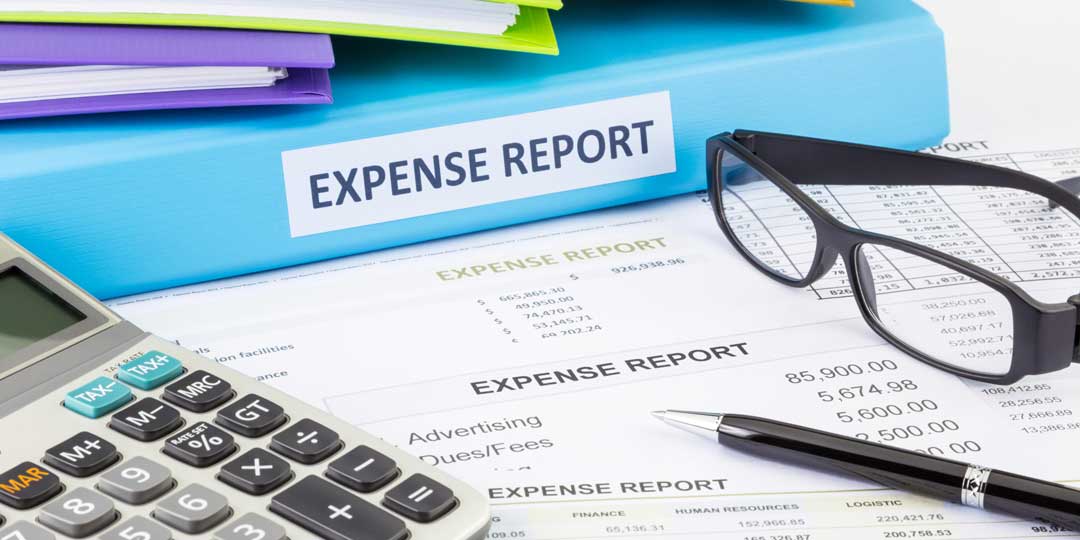
Small businesses regularly amass expenses connected to employee travel, meals, customer relations, and other necessary items.
The Canada Revenue Agency (CRA) provides an extensive list of acceptable business expenses. According to the law, businesses are required to save all of their receipts (and financial documents), therefore, you should have a good internal audit process; to evaluate the validity of said receipts.
This process includes auditing data entries (particularly manual entries), gathering receipts from employees, confirming employee banking details, and recording other business-related expenses.
Internal Expense Report Auditing
There are several forms of expenses, you can deduct. The most common being:
- Advertising
- Business start-up costs
- Insurance
- Office supplies and utilities
- Maintenance and repairs
- Property taxes and rent
- Travel
- Insurance policies
- Contractor salaries
Businesses should consider developing a procedure for, periodically, reviewing and auditing common expenses, as a batch file. An advantage of the batch process is, it avoids errors in data entry. You can simply sort each batch, by batch number, making the expense report internal auditing process, more efficient.
Moreover, you can process all expenses, at the same time, using an accounting or expense tracking program.
Internal Audit Procedures
An internal audit provides a systematic approach to assessing the processes and controls of your business. Thankfully, hiring an outside consultant to complete an audit of your business, is not needed. The best audit methods are unobtrusive and, essentially, hidden from those involved in the auditing process.
The audit process should be continuous and seamless, while the emphasis should be on the financial data that is being entered into your computer system. Tracking and verifying expense receipts and bank transfers is also a vital part of auditing.
Periodically implementing new audit plans may assist you in discovering problems within your business operations. Developing multiple internal auditing processes may be difficult, however, doing so is very important, as it can save you a lot of time and hassle. Using various auditing methods increases your chances of finding and correcting unnecessary business expenses, this, in turn, increases your bottom line.
Examples: Internal Audit Procedures for Expenses
Your business’ auditing practices must include examining documents that confirm that the owner, business partner, or employee completed a specific process or transaction. It’s also important to gather specific information related to the transaction; an example of this is as follows:
- To subtract the cost of an airline ticket, you must collect the ticket and boarding pass, as verification. A member of your business may purchase a flight but later cancel for a refund. As a result, it’s important to verify both documents
It’s also important to verify multiple receipts issued from the same business. Similar dates and times stamps could indicate that something is incorrect; an example of this is as follows:
- An employee may have collected a receipt from another person leaving the store at the same time. Suppose a sales manager submits a receipt for a group dinner and starts an internal audit to analyze the expense reports. If someone else also submitted a receipt for the same meal, it could be viewed as fraudulent activity
Unfortunately, it is not unusual for members of a business to be dishonest, as a result, analyzing everyone’s business expenses, regularly, is necessary.
Although internal auditing may seem tedious and time-consuming, it could save your company a great deal of money and keep your financial health in good condition. Maintaining a good audit process for reviewing expense reports, prevents fraudulent activity, and reduces the likelihood, you’ll receive a negative business audit from the CRA.
CRA Business Audit Red Flag
The Canada Revenue Agency conducts business audits on deductions, this is to ensure ledgers, journals, invoices, bank statements, and receipts are well-documented. This includes business-related personal and family records.
Concerning deductions, large and/or unusual charges are viewed as red flags. Similarly, claiming large home-office deductions or 100% business use of a personal vehicle, are also viewed as red flags. Therefore, it is in the best interest of you and your company to create regular simple internal audit procedures, to ensure ‘red flags’ do not occur.
Source: Intuit
Newsletters
No Results Found
The page you requested could not be found. Try refining your search, or use the navigation above to locate the post.
Events & Sponsorship
No Results Found
The page you requested could not be found. Try refining your search, or use the navigation above to locate the post.
Articles & Publications
Budget 2021: What’s missing?
Budget 2021: What’s missing? The Liberal government has laid out billions in fresh spending after over two years without a federal budget — and while many of the government’s recent pledges graced its pages, others were notably absent. It’s possible some policies were...
2021 Canadian Federal Budget – Tax Initiatives
On April 19, 2021, Deputy Prime Minister and Finance Minister Chrystia Freeland tabled in the House of Commons the Liberal Government’s first federal budget in more than two years, A Recovery Plan for Jobs, Growth, and Resilience (Budget 2021). Budget 2021 contains...
What Do I Need to Open a Business Bank Account?
What Do I Need to Open a Business Bank Account? Business bank accounts help your business appear more professional to the CRA and your customers. Here's a closer look at why you may want a business bank account and how to choose the best one. Each stage of building a...
The importance of Financial Reporting
The Importance of Financial Reporting Beyond the record creation process, accountants use the information gathered for analysis and interpretation. Accountants are usually concerned with understanding the meaning of the amounts they obtain, and they look for the...
CRA Emergency Payments: 2 Massive Changes Coming
The Canada Revenue Agency (CRA) launched the Canada Emergency Response Benefit (CERB) as the flagship COVID-19 program by the Canadian government in 2020. CERB became a lifeline for Canadians who lost income due to the pandemic. The program ended on September 27,...